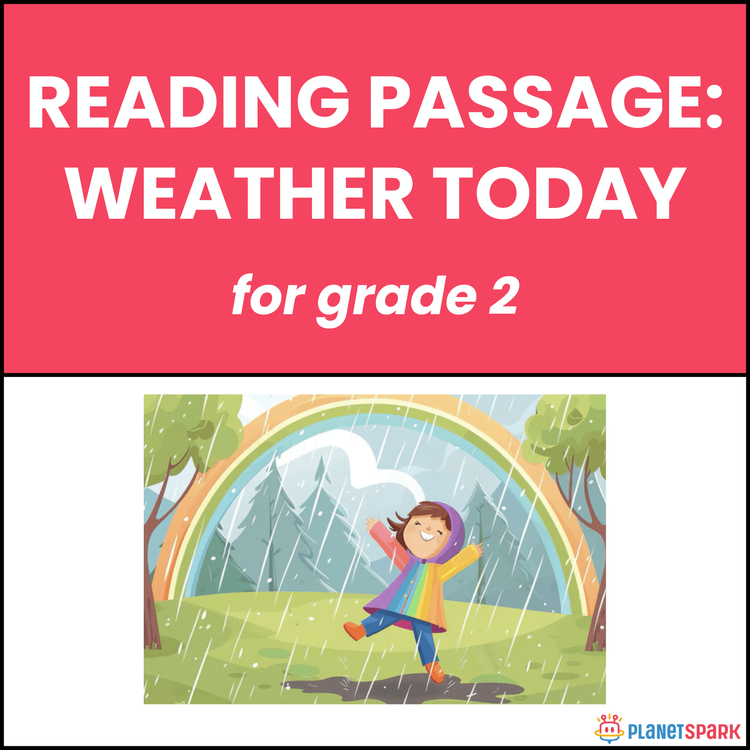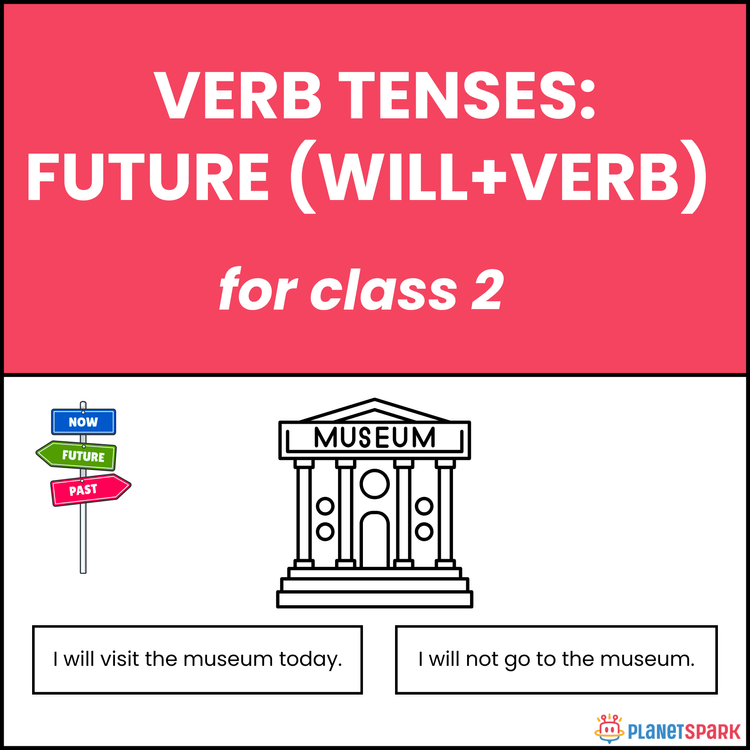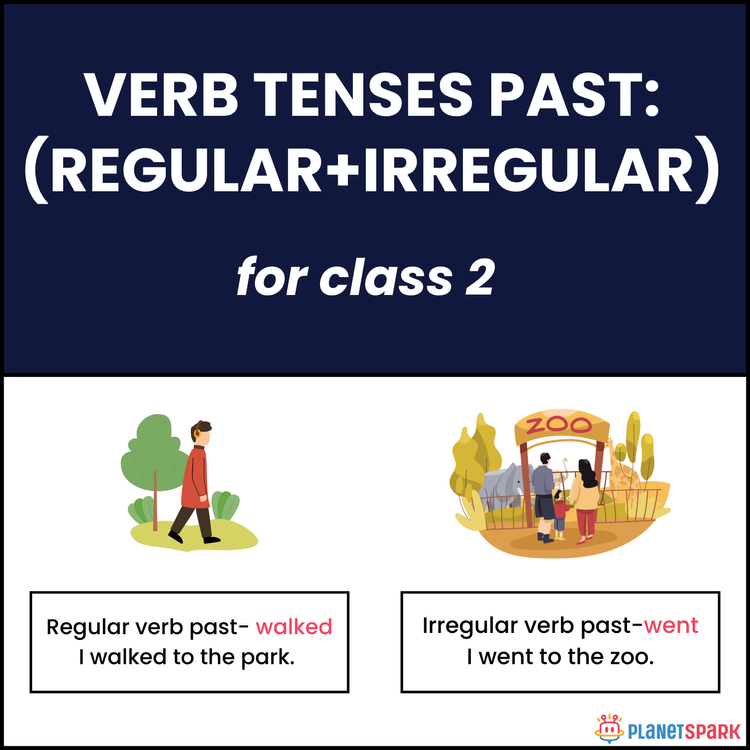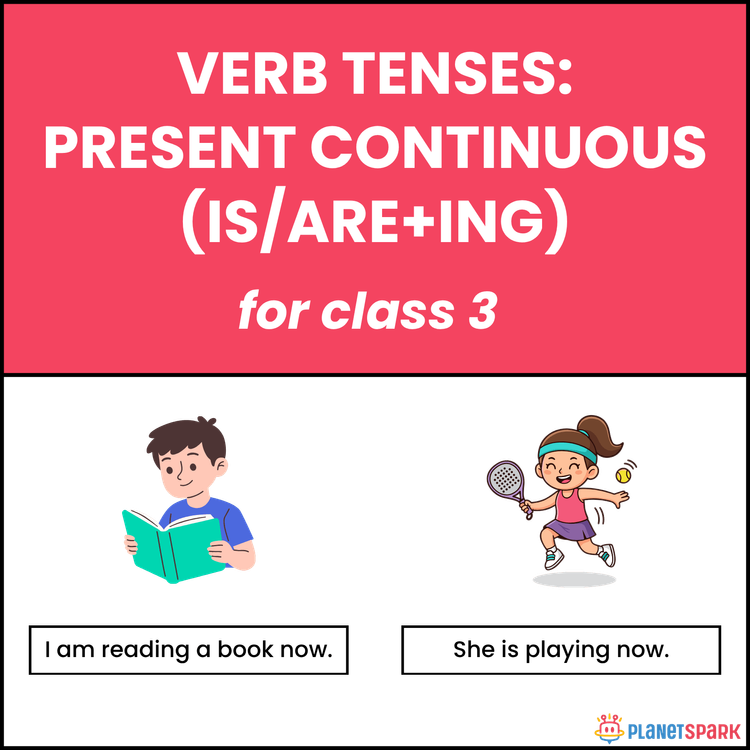Class 2 Grammar Worksheet: Present Continuous Tense


Class 2 Grammar Worksheet: Present Continuous Tense
Happening Now: Present Continuous Tense for Class 2
This cheerful Grade 2 worksheet introduces children to the Present Continuous Tense — the form used to describe actions happening right now using *am/is/are + verb + ing*. Through fun exercises like multiple-choice questions, true or false checks, fill in the blanks, rewriting, and paragraph writing, learners master how to talk about current activities clearly and confidently.
Why the Present Continuous Tense Matters in Grammar?
The Present Continuous Tense helps children describe what’s happening at the moment. For Grade 2 learners, this topic is important because:
1. It teaches how to form and use *am, is,* and *are* correctly with verbs.
2. It builds vocabulary through action-based learning.
3. It encourages observation and real-life sentence formation.
4. It supports fluency in both speaking and writing.
What’s Inside This Worksheet?
This worksheet includes five engaging grammar exercises for young learners:
🧠 Exercise 1 – Multiple Choice Questions
Students choose correct Present Continuous sentences.
✏️ Exercise 2 – True or False
Learners identify whether sentences correctly show Present Continuous actions.
📋 Exercise 3 – Fill in the Blanks
Students fill blanks with -ing forms of verbs to describe what people are doing right now.
📝 Exercise 4 – Sentence Rewriting
Learners rewrite simple present sentences into Present Continuous form using am, is, or are.
📖 Exercise 5 – Paragraph Writing
Students complete a short story about a snowy day in Shimla using Present Continuous verbs to describe ongoing actions.
✅ Answer Key (For Parents & Educators)
Exercise 1 – Multiple Choice Questions
1. a) Aanya is eating mangoes.
2. b) Kabir is not reading now.
3. b) Is Tara playing football?
4. a) Vivek is helping his father.
5. b) They are drawing pictures.
6. b) Saanvi is cooking dinner.
7. a) We are going to the park.
8. b) I am watering the plants.
9. a) The birds are singing now.
10. b) The sun is shining brightly.
Exercise 2 – True or False
1. T
2. T
3. T
4. T
5. F (We are playing with our dog.)
6. F (Tara is cooking lunch now.)
7. F (Vivek is swimming in the pool.)
8. T
9. T
10. F (She is talking to her friend.)
Exercise 3 – Fill in the Blanks
1. working
2. packing
3. playing
4. drinking
5. walking
6. reading
7. serving
8. clicking
9. singing
10. dancing
Exercise 4 – Sentence Rewriting
1. Aanya is eating apples today.
2. Are you eating chocolates?
3. Kabir is reading at night.
4. Aanya is not eating rice today.
5. Tara is helping her mother.
6. We are cleaning our room today.
7. They are singing songs in the evening.
8. I am going to school early.
9. Raj is playing cricket in the park.
10. He is drinking milk now.
Exercise 5 – Paragraph (Sample Completion)
1. drinking
2. taking
3. smiling
4. playing
5. folding
6. watching
7. making
8. laughing
9. running
10. enjoying
11. hearing
12. talking
Make your child’s grammar learning exciting and visual with this Present Continuous worksheet — perfect for describing what’s happening *right now*!
🔖Book a free trial!
Frequently Asked Questions
They are present participles, showing ongoing actions or continuous tense verbs.
They add is, am, or are before the ing verb to show an action happening now.
They help form continuous tenses and describe real-time actions accurately.





